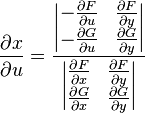>
Does it vary with Anode voltage/current?
Yes, but practically very little.
GE 12AU7 shows RP laying pretty parallel for different plate voltages, but a wide range of RP as current changes.
But what current will we run? Usually as little as possible; clean hi-volt current is expensive. For a Voltage Amplifier, "ideally" we'd pick load very high and RP very low. But the world sucks, and stray capacitances give <1Meg impedances at the top of the audio band. Most volt-amp loads are 100K-500K, either resistors or 20KHz capacitances. So that limits us one way. The other way, we note low-
Mu low-RP tubes, and high-
Mu high-RP tubes, and gain is somewhat precious, so we can't pick an arbitrarily low RP.
So pick your load. Then pick your plate resistOR Rp 2 to 5 times higher so you get good pull-up drive. Then pick your tube for RP 2 to 5 times lower than Rp for good pull-down drive.
Unless the load is exceptionally high, a factor of "5" means an exceptionaly low RP tube, a low-
Mu tube, and low gain. Factor of 2 or 3 is much more likely.
So Rp is likely to be OTOO 50K to 250K. Lower Rp means less gain and more costly current, a lose-lose solution. It can mean extended bandwidth, but the popular triodes are popular
because you will usually get the full audio band with simple economical plans.
And RP is likely to be 2 or 3 times lower than Rp, 25K to 100K.
Back up. If the tube were exactly linear a certain way, a "good" bias might be to set the plate at half the supply rail. If that were true, the tube's linear plate resistance RP must be equal to the DC resistOR Rp. And then Z(out) must be RP||Rp or half of Rp.
So why do I say 0.15 to 0.4 times Rp?
Tubes are not linear. The plate curves, uh, curve. In a way which makes the small-signal resistance considerably smaller than the DC effective resistance: they start slow then steepen-up. So small-signal RP is less than DC operating point resistance, which is similar to DC load Rp. If we assume small-signal RP is half of DC RP, and load with Rp=RP, then we have (RP/2)||Rl, or 0.33 times Rl. A little higher when we work a high-
Mu high-RP tube hard, a little lower when we work a low-
Mu low-RP tube easy.
OTOH, if you are making a POWER amplifier, with say 2A3 at 250V 50mA, Z(out) is sheet-value RP for most practical purposes. And the "best load" for a triode Power Amp is around 2*RP, although wide deviations make small differences.








